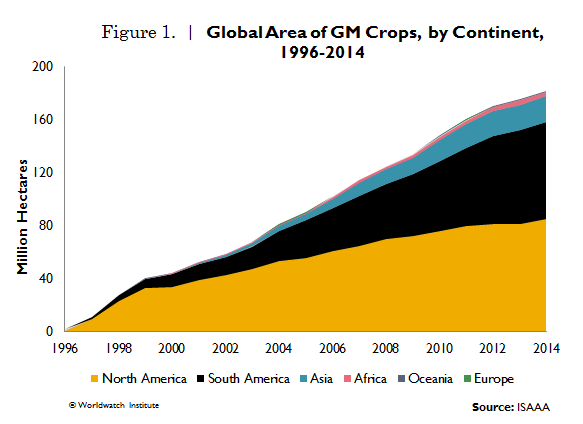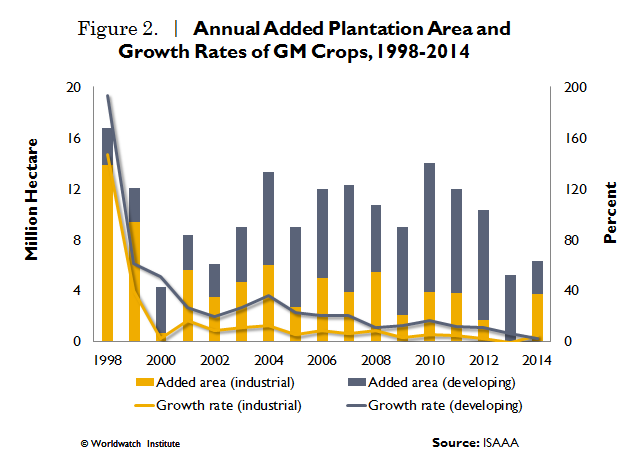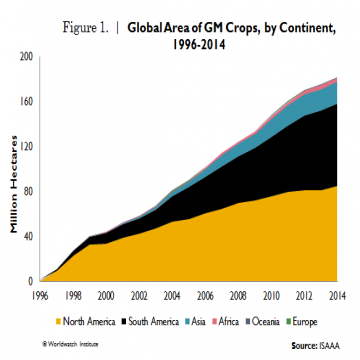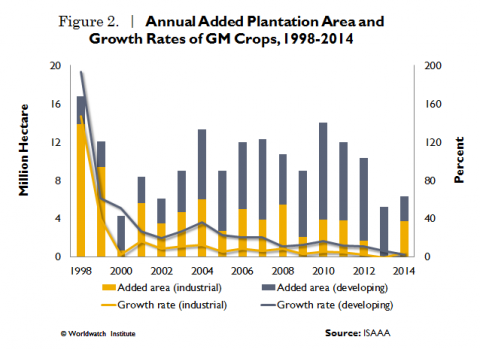Genetically Modified Crop Industry Continues to Expand | Vital Signs Online
Wanqing Zhou
Genetically modified (GM) crops have had their genetic materials engineered through biotechnologies to introduce new or enhanced characteristics (traits), such as herbicide tolerance, insect resistance, enhancement of certain nutrients, and drought tolerance. The global plantation area of GM crops has been growing for more than two decades, since they were first commercialized in the early 1990s, and it reached 181.5 million hectares in 2014.1 (See Figure 1.) But the annual growth rate has slowed considerably, from over 125 percent in the late 1990s to 6.3 percent in the early 2010s.2

According to the International Service for the Acquisition of Agri-biotech Applications, an organization that has been keeping track of official information on GM crop field trials and plantings, North America and South America accounted for 87 percent of the global GM crop area in 2014, with 84.7 million and 73.3 million hectares, respectively.3 They were followed by Asia (19.5 million hectares), Africa (3.3 million hectares), Oceania (0.5 million hectares), and Europe (0.1 million hectares).4
The peak growth in global planted area occurred in 1998.5 The 16.8-million-hectare increase that year—nearly twice the increase in 1997—was largely attributed to the rapid expansion of GM crops in the United States and Argentina.6 In the first decade of the twenty-first century, active growth in planted area expanded from North and South America to Asia and Africa. For most of the 2010s, developing countries in South America (mainly Brazil and Argentina), Asia (mainly China and India), and Africa (mainly South Africa) added a larger area than the industrial countries did. Since 2012, the developing world has been planting larger areas of GM crops than industrial countries have. (See Figure 2.) However, the growth rates in both the industrial and the developing world are declining.



